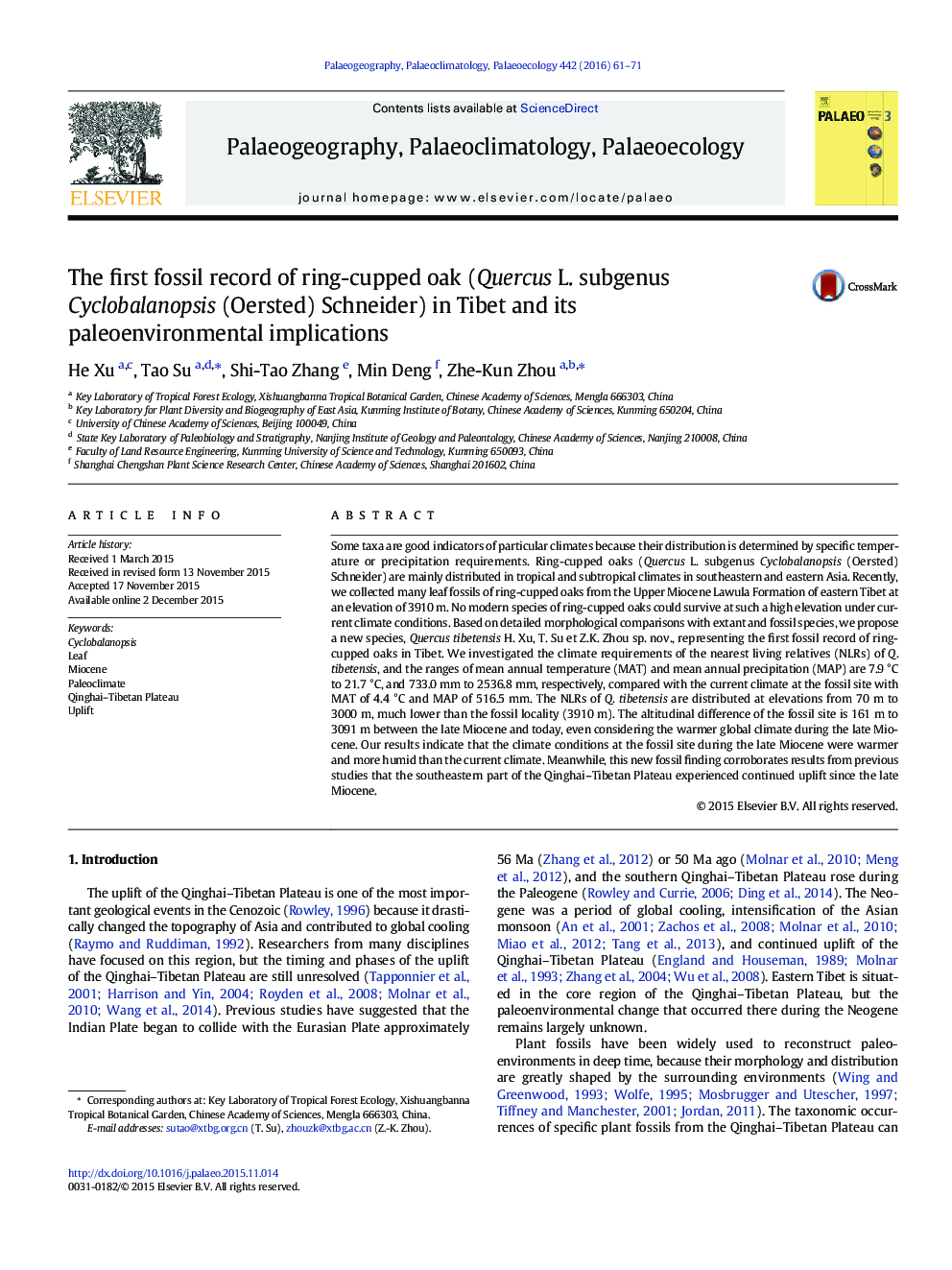| کد مقاله | کد نشریه | سال انتشار | مقاله انگلیسی | نسخه تمام متن |
|---|---|---|---|---|
| 6349296 | 1622149 | 2016 | 11 صفحه PDF | دانلود رایگان |
عنوان انگلیسی مقاله ISI
The first fossil record of ring-cupped oak (Quercus L. subgenus Cyclobalanopsis (Oersted) Schneider) in Tibet and its paleoenvironmental implications
دانلود مقاله + سفارش ترجمه
دانلود مقاله ISI انگلیسی
رایگان برای ایرانیان
کلمات کلیدی
موضوعات مرتبط
مهندسی و علوم پایه
علوم زمین و سیارات
فرآیندهای سطح زمین
پیش نمایش صفحه اول مقاله

چکیده انگلیسی
Some taxa are good indicators of particular climates because their distribution is determined by specific temperature or precipitation requirements. Ring-cupped oaks (Quercus L. subgenus Cyclobalanopsis (Oersted) Schneider) are mainly distributed in tropical and subtropical climates in southeastern and eastern Asia. Recently, we collected many leaf fossils of ring-cupped oaks from the Upper Miocene Lawula Formation of eastern Tibet at an elevation of 3910 m. No modern species of ring-cupped oaks could survive at such a high elevation under current climate conditions. Based on detailed morphological comparisons with extant and fossil species, we propose a new species, Quercus tibetensis H. Xu, T. Su et Z.K. Zhou sp. nov., representing the first fossil record of ring-cupped oaks in Tibet. We investigated the climate requirements of the nearest living relatives (NLRs) of Q. tibetensis, and the ranges of mean annual temperature (MAT) and mean annual precipitation (MAP) are 7.9 °C to 21.7 °C, and 733.0 mm to 2536.8 mm, respectively, compared with the current climate at the fossil site with MAT of 4.4 °C and MAP of 516.5 mm. The NLRs of Q. tibetensis are distributed at elevations from 70 m to 3000 m, much lower than the fossil locality (3910 m). The altitudinal difference of the fossil site is 161 m to 3091 m between the late Miocene and today, even considering the warmer global climate during the late Miocene. Our results indicate that the climate conditions at the fossil site during the late Miocene were warmer and more humid than the current climate. Meanwhile, this new fossil finding corroborates results from previous studies that the southeastern part of the Qinghai-Tibetan Plateau experienced continued uplift since the late Miocene.
ناشر
Database: Elsevier - ScienceDirect (ساینس دایرکت)
Journal: Palaeogeography, Palaeoclimatology, Palaeoecology - Volume 442, 15 January 2016, Pages 61-71
Journal: Palaeogeography, Palaeoclimatology, Palaeoecology - Volume 442, 15 January 2016, Pages 61-71
نویسندگان
He Xu, Tao Su, Shi-Tao Zhang, Min Deng, Zhe-Kun Zhou,